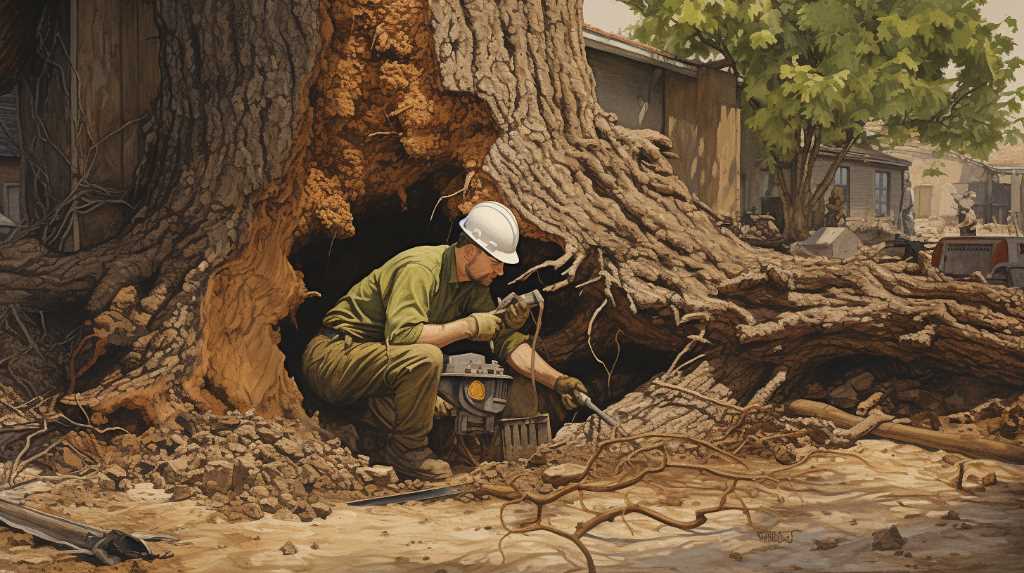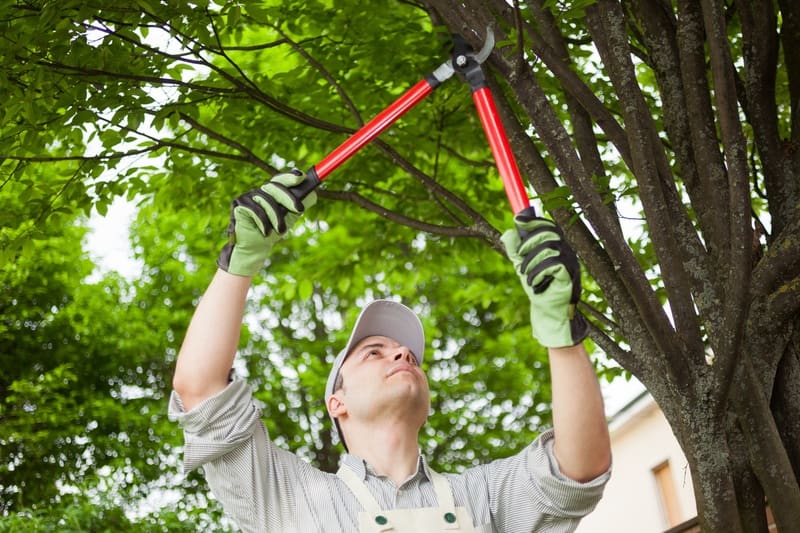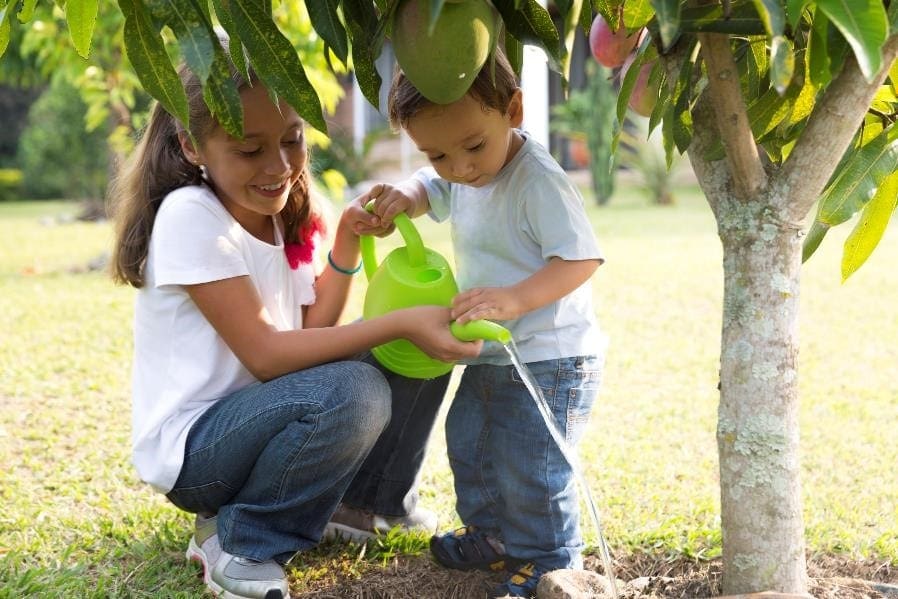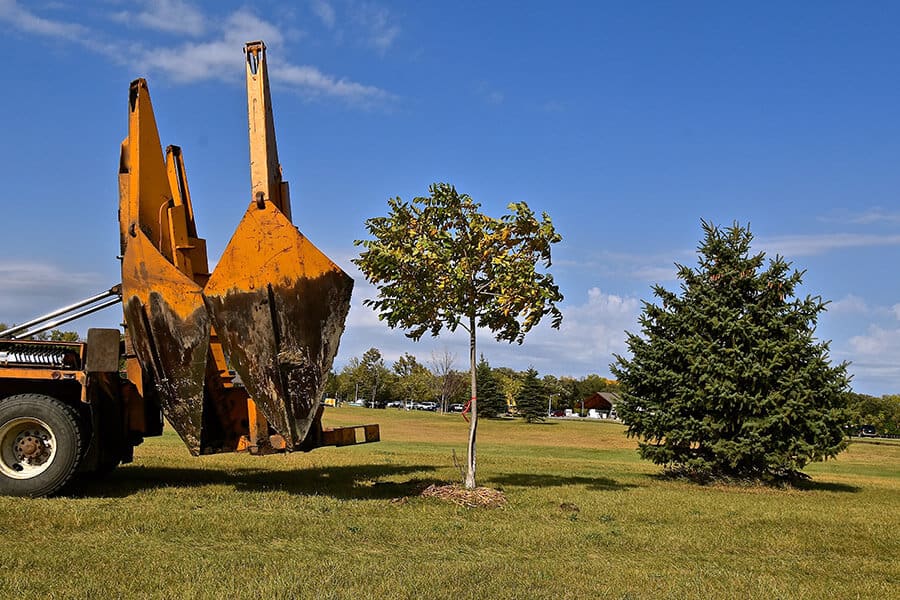Tree Removal
Top Methods for Successful Mature Tree Transplantation


As an experienced arborist, I’ve learned that transplanting mature trees is like moving a cherished piece of history to a new home. It requires careful planning, meticulous execution, and ongoing care.
In this article, I will share the top methods for successfully transplanting mature trees, from selecting the right tree to post-transplant maintenance. Whether you’re a homeowner wanting to preserve a beloved tree or a landscaper looking to enhance a client’s property, these techniques will ensure a seamless and thriving transplantation process.
Selecting the Right Tree
When selecting the right tree for transplantation, I need to consider various factors such as size, health, and adaptability.
Size is crucial because it determines whether the tree can be safely uprooted and transported without causing significant damage.
A healthy tree, free from diseases and pests, is more likely to survive the transplantation process and thrive in its new location.
Adaptability refers to the tree’s ability to acclimate to its new environment, including soil conditions, climate, and sunlight exposure.


It’s important to choose a tree species that’s suited to the specific conditions of the transplant site to ensure its long-term survival.
Preparing the Transplant Site
To ensure the successful transplantation of a mature tree, I frequently prepare the transplant site to create optimal conditions for the tree’s growth and establishment. Here are three key steps I take to ensure a successful transplant:
- Soil analysis: Before transplanting the tree, I conduct a soil analysis to determine its pH level, nutrient content, and drainage capacity. This helps me identify any potential deficiencies or imbalances that may hinder the tree’s growth.
- Soil preparation: Based on the soil analysis, I amend the transplant site by adding organic matter, such as compost or peat moss, to improve soil structure and fertility. This ensures that the tree has access to essential nutrients and water.
- Location evaluation: I carefully evaluate the transplant site to ensure it meets the tree’s specific requirements. Factors such as sunlight exposure, wind protection, and proximity to other trees or structures are taken into consideration to provide the tree with the best possible conditions for growth.
Proper Tree Pruning Techniques
One crucial step in ensuring successful mature tree transplantation is employing proper pruning techniques. Pruning plays a vital role in maintaining the health and structural integrity of trees, especially during the transplantation process.
When pruning a mature tree for transplantation, it’s essential to follow specific guidelines to minimize stress and promote optimal growth.
First, identify and remove any dead, diseased, or damaged branches. This helps prevent the spread of diseases and reduces the risk of breakage during transportation.
Next, thin out the crown by selectively removing overcrowded branches. This improves air circulation and reduces the weight on the tree.
Lastly, prune the roots to stimulate new root growth and encourage a healthy root system.


Safely Digging and Handling the Tree
Digging and handling the tree safely is crucial for successful mature tree transplantation. To ensure the safe and efficient transfer of the tree, follow these key steps:
- Plan and prepare: Before digging, assess the tree’s size, root depth, and surrounding obstacles. Plan the excavation process accordingly, considering factors like the weather and equipment needed.
- Create a root ball: Begin by digging a circular trench around the tree, ensuring it encompasses the entire root system. Use a sharp spade or tree spade to minimize root damage.
- Lift and transport: Once the root ball is complete, carefully lift the tree using a mechanical tree spade or a tree transplanting machine. Secure the root ball to prevent soil loss during transportation.
By following these steps, you can minimize stress on the tree’s roots and increase the chances of successful transplantation.
Post-Transplant Care and Maintenance
After successfully transplanting a mature tree, it’s important to provide proper post-transplant care and maintenance. This phase is crucial for the tree’s survival and successful establishment in its new environment.
One key aspect of post-transplant care is watering. The tree should be watered regularly, especially during the first few weeks after transplantation. Adequate watering helps the tree develop a strong root system and prevents dehydration.
Mulching is another important practice that helps retain moisture in the soil and suppresses weed growth.
Additionally, monitoring the tree for signs of stress or disease is essential. Regular inspection allows for timely detection and treatment of any issues that may arise.
Finally, providing proper nutrition through fertilization is crucial for the tree’s long-term health and growth.


Following these post-transplant care practices will ensure the successful establishment and growth of the transplanted mature tree.


Hello there! I’m Logan Foster, the green-thumbed social media marketer behind the vibrant world of 1800TreeGuy.com. With roots firmly planted in arboriculture, I’ve branched out to help clients cultivate their dream outdoor spaces, one leafy canopy at a time. My knack for nurturing nature is more than a profession—it’s a way of life.
When I’m not talking trees and teaching the art of arboreal care, you can find me cheering on the Bulldogs—my alma mater’s pride and my forever team. My environmental studies there didn’t just teach me about ecosystems; they instilled a lifelong passion for protecting our planet.
Off the clock, I’m an adventurer at heart. Whether it’s trekking the Appalachian trails, pedaling down a mountain path, or crafting guides to share the wonders of the wild, I’m happiest with soil under my nails and the sun on my face. And let’s not forget Yoda, my pug sidekick. He may not have mastered the art of stillness, but his joyful grins are my daily dose of happiness.
I’m all about making connections—between people and the great outdoors and between my clients and their ideal landscape visions. My approach is personal; every tree has a story, and every garden reflects its caretaker.
If you want to green your scene or share in my outdoor escapades, give me a shout on Instagram or Facebook. Let’s cultivate a conversation and grow a community rooted in a love for the lush life.








